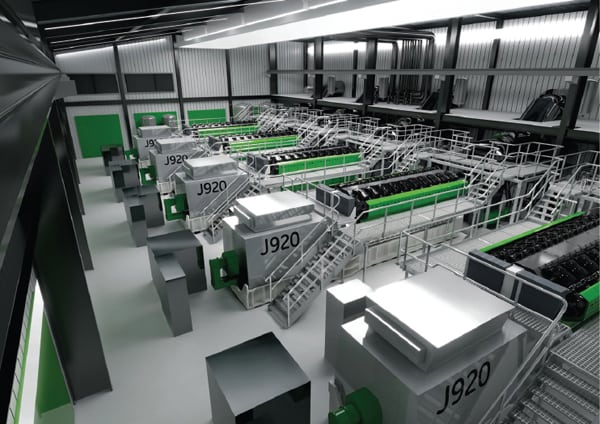GE Launches 9.5-MW Engine for Distributed Generation
A 9.5-MW gas engine unveiled by GE this October for decentralized, independent power producers in remote, hot, or high-altitude regions features a 48.7% electrical efficiency and promises to reduce lifecycle costs by lowering fuel consumption.
GE, which introduced a prototype of the engine at a ceremony in Jenbach, Austria, said that the technology was suited for use in combined heat and power applications and for the stabilization of power grids. The company touted the engine’s ability to reach full output in only 5 minutes. Another benefit stressed at the unveiling ceremony was the engine’s reduction of greenhouse gas emissions: GE claimed that compared to commercially available gas engines of the same output range, the J920 can prevent about 1,500 metric tons of carbon dioxide emissions annually.
Testing of the 20-cylinder engine has been under way at a test bench at the company’s manufacturing facilities in Austria since late summer (Figure 5). The next step involves putting the technology into operation at a municipal utility company in Rosenheim, Germany, as part of a larger-scale pilot test. Then, serial production is expected to begin. GE said that the new engine should be available for use in 50 Hertz and 60 Hertz countries in 2012.
 |
| 5. Writ large. GE in October unveiled the J920, a gas engine with an electrical efficiency of 48.7% and an output of 9.5 MW. A prototype of the engine is being tested at the company’s manufacturing facilities in Austria. Next, the company plans to put the technology into operation in Rosenheim, Germany, as part of a larger pilot test. Serial production is expected to begin in 2012. Courtesy: GE |
In June, GE launched what it called “the world’s first two-stage turbocharged gas engine,” a new technology initially being applied to the company’s Jenbacher J624 engine. The technology essentially upgrades the 24-cylinder gas engine GE introduced in 2007 for commercial power generation from 4 MW to 4.4 MW while increasing its electrical efficiency to 46.5%. The company’s J920 prototype is based on core elements from combustion systems used in the Jenbacher 6 series, GE said, but the newer technology uses a three-module concept comprising the engine itself, a generator, and an auxiliary module. The J920 engine is also equipped with a two-stage turbocharging system.
—Sonal Patel is POWER’s senior writer.